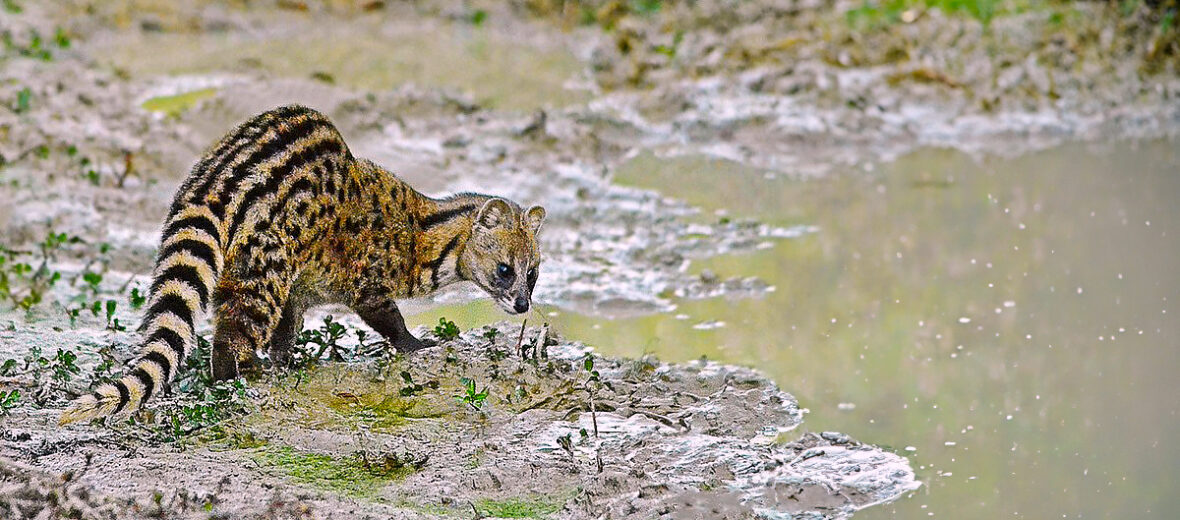
The small Indian civet can be found in India, through southern and southeastern Asia, and into Australasia. These critters tolerate a wide collection of habitats such as riverine areas, marshes, grasslands, savannahs, deciduous forests, semi-evergreen forests, thorn forests, bamboo forests, scrub brush regions, tea plantations, and close to villages. They face the threats of hunting and trapping but are abundant and their populations are stable, thus the IUCN lists them as Least Concern.
First the Stats…
Scientific name: Viverricula indica
Weight: Up to 8.81 lbs.
Length: Up to 23 inches, plus up to a 17 inch tail
Lifespan: Up to 9 years
Now on to the Facts!
1.) These critters are nocturnal (active at night).
2.) Small Indian civets are primarily terrestrial (spend their lives on the ground), although they can climb, if necessary.
3.) They are solitary, but can sometimes be seen in mated pairs.
4.) Insects, mice, rats, birds, snakes, carrion (dead animals), roots, and fruits are all consumed.
5.) In some locales, breeding is seasonal, whereas in others mating takes place year round.
But wait, there’s more on the small Indian civet!
6.) Females undergo up to a 69 day gestation (pregnancy) that yields up to 5 pups.
7.) Pups are weaned in up to 4.5 months.
Did you know…?
These civets are hunted for their coats and for a glandular secretion called civet musk. This musk is utilized in perfumes, colognes, and for medicine.
8.) Small Indian civets are often captured and sold as pets. Unfortunately, they don’t tend to live long in captivity and their life expectancy can be shortened without proper care.
9.) Lions, leopards, hyenas, wild dogs, snakes, and crocodiles all prey on these civets.
10.) The small Indian civet was introduced to Madagascar. Feral small Indian civets have been recorded in Ranomafana National Park in southeastern Madagascar and in a couple other locations.
Now a Short Small Indian Civet Video!
Be sure to share & comment below! Also, check out the Critter Science YouTube channel. Videos added regularly!
Want to suggest a critter for me to write about? Let me know here.
Some source material acquired from: Wikipedia & IUCN
Photo credit: Rejaul karim



